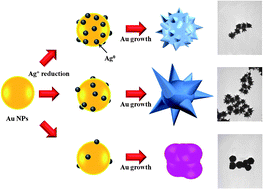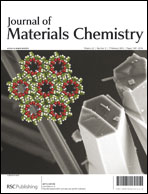This work demonstrates a simple method for synthesizing a shape-controllable bimetallic gold/silver nanostructured material. Spiky star-shaped gold/silver nanoparticles are obtained by mixing HAuCl4, AgNO3 and ascorbic acid with shaking for 20 s. The wide range of star shapes and irregular quasi-spherical nanoparticles is tailored by tuning the ratio of metal precursors. The wavelengths absorbed by the nanoparticles can be tuned from visible light to near infrared by controlling their shape. To maintain the morphology of the nanoparticles, enhance their thermal stability and support their application in biological systems, modified chitosan was utilized for the properties and to keep the material well dispersed in solution in deionized water. The moderate concentration of modified chitosan capped bimetallic star-shaped nanoparticles not only ensured non-toxicity to normal cells and cancer cells, but also promoted high efficiency photothermal ablation of cancer cells. Ultimately, this nanotechnology-driven assay has huge potential for application in rapid synthesis, tunable absorption and non-cytotoxic photothermal therapy for the effective treatment of cancer.

You have access to this article
 Please wait while we load your content...
Something went wrong. Try again?
Please wait while we load your content...
Something went wrong. Try again?


 Please wait while we load your content...
Please wait while we load your content...